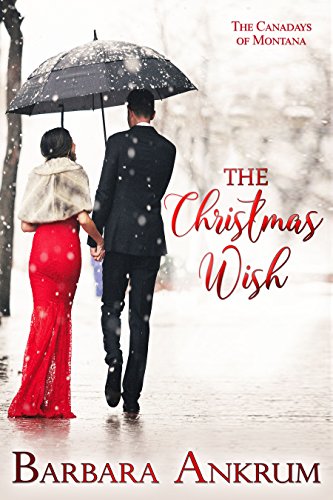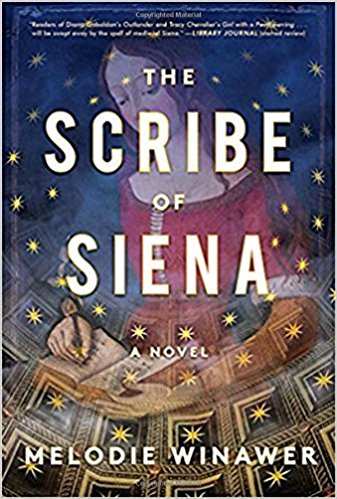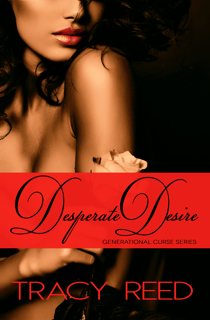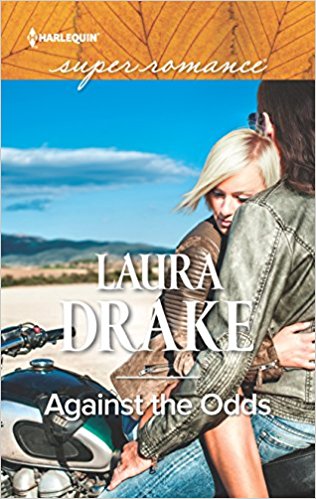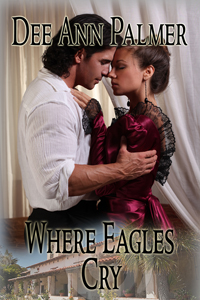Featured Author Jina Bacarr
July 28, 2018 by Jina Bacarr in category Featured Author of the Month tagged as contemporary romance, Featured Author of the Month, Jina Bacarr, YAJina Bacarr : July Featured Author
Jina Bacarr discovered early on that she inherited the gift of the gab from her large Irish family when she penned a story about a princess who ran away to Paris with her pet turtle Lulu. She was twelve. She grew up listening to their wild, outlandish tales, and it was those early years of storytelling that led to her love of history and traveling.
She enjoys writing to classical music with a hot cup of java by her side. She adores dark chocolate truffles, vintage anything, the smell of bread baking and rainy days in museums. She has always loved walking through history—from Pompeii to Verdun to Old Paris.
The voices of the past speak to her through carriages with cracked leather seats, stiff ivory-colored crinolines, and worn satin slippers. She has always wondered what it was like to walk in those slippers when they were new.
Book Review: The Lawrence Browne Affair by Cat Sebastian
July 27, 2018 by A Slice of Orange in category Writing tagged as Beauty and the Beast, Cat Sebastian. gay romance, Regency romance
In this captivating Regency romance, Cat Sebastian crafts a many-layered love story reminiscent of a rejuvenated tale of Beauty and the Beast. The story of Radnor and Georgie delights with winsome, finely-tuned prose that renders the narrative sexy, dashing, funny, and deeply poignant.
 From the book description:
From the book description:
An earl hiding from his future . . .
Lawrence Browne, the Earl of Radnor, is mad. At least, that’s what he and most of the village believes. A brilliant scientist, he hides himself away in his family’s crumbling estate, unwilling to venture into the outside world. When an annoyingly handsome man arrives at Penkellis, claiming to be Lawrence’s new secretary, his carefully planned world is turned upside down.
A swindler haunted by his past . . .
Georgie Turner has made his life pretending to be anyone but himself. A swindler and con man, he can slip into an identity faster than he can change clothes. But when his long-dead conscience resurrects and a dangerous associate is out for blood, Georgie escapes to the wilds of Cornwall. Pretending to be a secretary should be easy, but he doesn’t expect that the only madness he finds is the one he has for the gorgeous earl.
Can they find forever in the wreckage of their lives?
Challenging each other at every turn, the two men soon give into the desire that threatens to overwhelm them. But with one man convinced he is at the very brink of madness and the other hiding his real identity, only true love can make this an affair to remember.
When I was in college, my drug of choice was not pot or beer – it was Beauty and the Beast. The Disney cartoon. I would watch it on a loop as I pulled an all-nighter or pop it into the VCR when I needed to relax and remember sanity. While I was always aware of what bothered me about the story, I successfully muffled my misgivings. Like the whole kidnapping angle, for instance. Not an auspicious start to a romance. And quite frankly, the theme of the whole story raises my hackles – a boorish male kidnaps a young woman and treats her terribly, but they fall in love and then he turns into a handsome prince. Just writing it out makes me feel a bit sick. Because let’s face it, a boorish man who treats you terribly tends to get worse, not better, as the relationship progresses. And thinking you can change a beast into a price is a dark road to go down.
So why do I love the story so? A line from the song “Beauty and the Beast” by Howard Ashman and Alan Menken best explains my love for this story: “Barely even friends, Then somebody bends Unexpectedly.” I love the unfurling of the relationship, the quiet thrill of two characters discovering one another, and realizing what is most essential about the other person. Is there a book-loving woman alive who doesn’t swoon when The Bet presents Belle with his entire library?
The most wonderful thing about The Lawrence Browne Affair (and there are MANY wonderful things) is that it tells a Beauty and the Beast story without all of the disturbing elements. The Beast – the “mad” Earl of Radnor, does not kidnap Georgie and then scream and yell and frighten his victim just because he is so angry at his own bad choices and where they have led. Yes, Radnor is gruff with Georgie, a secretary he did not invite – and does not want – in his home. Radnor’s manners can be gruff, but evidence of his life-long decency and compassion reveals itself throughout the story. And far from kidnapping Georgie, Radnor has Georgie foisted upon him and once Georgie is there, he just won’t seem to leave.
Once they are together in the crumbling mansion, each man’s personality, history, and motives become less murky, and as they begin to fall for one another, these characters crystalize into unexpectedly brilliant gems. And Sebastian keeps the twists coming throughout the book, as more and more gets revealed about each character, and as the life of each man evolves in tune with the other.
Sebastian has written many books, and I confess I love them all. The Lawrence Browne Affair is my favorite. Each book of hers if sexy, funny, richly poignant, and so deftly written! Each of her books in a stand-alone read and the books in Cat Sebastian series do not need to be read in order. If you are looking for a new author to binge-read, I dare say, you might just have found her. Happy reading, indeed!

The Secrets to Selling More Books with Penny Sansivieri OCC/RWA Online Class @Bookgal
July 23, 2018 by Linda McLaughlin in category Online Classes tagged as Amazon Marketing, business, Marketing, OCC/RWA, Online Classes, Penny Sanseviere, street teams, The Secrets to Selling More BooksOCC/RWA Online Class:
August 13-24, 2018

About the Class:
https://www.asliceoforange.net/7765-2/
Week 1: How to Sell Books by the Truckload on Amazon
Amazon is a great place to sell books, but most authors don’t realize that Amazon has an internal sales machine that will actually help you market your book, for free, if you trigger it? It’s called their internal algorithm and, not that dissimilar from ranking on Google, once Amazon’s algorithm kicks in, you could see a boatload of free promotion come your way from Amazon. Here’s what the session will cover:
- Optimize your Amazon page: what you must do to start showing up in more searches
- Understanding categories/themes and how to rank consistently #1 in your category.
- Kindle Unlimited: How some authors are making a fortune here and how you can, too
- How to quadruple the reviews you get on Amazon.
- Why having a free book will help you sell more
Week 2: Super Fans & Street Teams- The Secrets to Selling More Books
At the end of the day, for all of the marketing we do, for all of the Tweeting, Facebook-ing, and blogging we really just want to know if it’s paying off. Does any of this sell books?
Have you ever asked yourself:
- How do I know if they are the right things to market my book?
- I don’t want to spend my life marketing, how can I get the most out of my efforts?
- Does giving away my book actually help sell it?
- Will any of this help me sell more books?
You will learn how to:
- Identify and reach your exact right market
- Turn fans into SUPER FANS and STREET TEAMS
- Ignite your fans so they promote your book
- Use free to sell more books
- Find and use the right social media for your book
About the Instructor:

Penny Sansevieri
Penny C. Sansevieri, Founder and CEO Author Marketing Experts, Inc., is a best-selling author and internationally recognized book marketing and media relations expert. She is an Adjunct Professor teaching Self-Publishing for NYU.
Her company is one of the leaders in the publishing industry and has developed some of the most innovative Social Media/Internet book marketing campaigns. She is the author of eighteen books, including How to Sell Your Books by the Truckload on Amazon, 5 Minute Book Marketing, and Red Hot Internet Publicity, which has been called the “leading guide to everything Internet.”
AME has had dozens of books top bestseller lists, including those of the New York Times, USA Today, and Wall Street Journal.
Enrollment Information
This is a 2-week online course that uses email and Groups.io. The class is open to anyone wishing to participate. The cost is $15.00 per person or, if you are a member of OCCRWA, $10.00 per person.
To sign up or for more information, go to the class page at the OCC/RWA website: http://occrwa.org/classes/online-class-four/.
Linda McLaughlin
OCC/RWA Online Class Coordinator
WRITE LIKE YOU COOK BY VERONICA JORGE
July 22, 2018 by Veronica Jorge in category Write From the Heart by Veronica Jorge tagged as Cook, Veronica Jorge, Write, Write from the heart
Stir the pot; in this case the plot, and you’ll see how alike writing and cooking can be.
Whether you’re writing a novella, (fast food), a novel, (a five-course dinner), or a short story, (preparing a snack), the success of your preparation depends upon mastering the tools of the trade.
Need to perfect a paragraph? Slice and dice to shorten sentences and speed the action.
Introduce suspense? Use a rolling boil.
Brown and simmer to smooth and lengthen a passage and to bring your reader’s heart rate back in rhythm.
Determine your pacing by flash-freezing, nuking in a microwave, or constantly stirring with a long wooden spoon.
Remember that your protagonist has to suffer, so turn up the heat and roast them or slow cook them.
Dealing with your villain offers the most options. Fry them, stew them in their own juice, lay them out with a rolling-pin, grill them or mash them. Alternately, you can prolong their just desserts in an all-day crock pot.
Bake or fricassee, it’s your choice. Just make sure you serve up a delectable morsel each time that will keep your guests coming back for more.
So next time you sit down to write, think about what your readers like and ask, “Can I take your order?”

See you next time on August 22nd.
Author Jina Bacarr
July 21, 2018 by Jina Bacarr in category Featured Author of the Month tagged as contemporary romance, Featured Author of the Month, historical romance, Jina Bacarr
Jina Bacarr : July Featured Author
Jina Bacarr discovered early on that she inherited the gift of the gab from her large Irish family when she penned a story about a princess who ran away to Paris with her pet turtle Lulu. She was twelve. She grew up listening to their wild, outlandish tales, and it was those early years of storytelling that led to her love of history and traveling.
She enjoys writing to classical music with a hot cup of java by her side. She adores dark chocolate truffles, vintage anything, the smell of bread baking and rainy days in museums. She has always loved walking through history—from Pompeii to Verdun to Old Paris.
The voices of the past speak to her through carriages with cracked leather seats, stiff ivory-colored crinolines, and worn satin slippers. She has always wondered what it was like to walk in those slippers when they were new.
Affiliate Links
A Slice of Orange is an affiliate with some of the booksellers listed on this website, including Barnes & Nobel, Books A Million, iBooks, Kobo, and Smashwords. This means A Slice of Orange may earn a small advertising fee from sales made through the links used on this website. There are reminders of these affiliate links on the pages for individual books.
Search A Slice of Orange
Find a Column
Archives
Featured Books
THE CHRISTMAS WISH
Will Eve find it’s possible that Christmas wishes aren’t only for little girls?
More info →THE SCRIBE OF SIENA
The captivating story of a brilliant woman's passionate affair with a time and a place . . .
More info →DESPERATE DESIRE
How desperate do you have to be, to break your marriage vows?
More info →WHERE EAGLES CRY
Jilted by love in 1834, Cara Lindsay sails from Boston to Mexico’s rugged California to begin a new life with a favorite aunt.
More info →Newsletter
Contributing Authors
Search A Slice of Orange
Find a Column
Archives
Authors in the Bookstore
- A. E. Decker
- A. J. Scudiere
- A.J. Sidransky
- Abby Collette
- Alanna Lucus
- Albert Marrin
- Alice Duncan
- Alina K. Field
- Alison Green Myers
- Andi Lawrencovna
- Andrew C Raiford
- Angela Pryce
- Aviva Vaughn
- Barbara Ankrum
- Bethlehem Writers Group, LLC
- Carol L. Wright
- Celeste Barclay
- Christina Alexandra
- Christopher D. Ochs
- Claire Davon
- Claire Naden
- Courtnee Turner Hoyle
- Courtney Annicchiarico
- D. Lieber
- Daniel V. Meier Jr.
- Debra Dixon
- Debra H. Goldstein
- Debra Holland
- Dee Ann Palmer
- Denise M. Colby
- Diane Benefiel
- Diane Sismour
- Dianna Sinovic
- DT Krippene
- E.B. Dawson
- Emilie Dallaire
- Emily Brightwell
- Emily PW Murphy
- Fae Rowen
- Faith L. Justice
- Frances Amati
- Geralyn Corcillo
- Glynnis Campbell
- Greg Jolley
- H. O. Charles
- Jaclyn Roché
- Jacqueline Diamond
- Janet Lynn and Will Zeilinger
- Jaya Mehta
- Jeannine Atkins
- Jeff Baird
- Jenna Barwin
- Jenne Kern
- Jennifer D. Bokal
- Jennifer Lyon
- Jerome W. McFadden
- Jill Piscitello
- Jina Bacarr
- Jo A. Hiestand
- Jodi Bogert
- Jolina Petersheim
- Jonathan Maberry
- Joy Allyson
- Judy Duarte
- Justin Murphy
- Justine Davis
- Kat Martin
- Kidd Wadsworth
- Kitty Bucholtz
- Kristy Tate
- Larry Deibert
- Larry Hamilton
- Laura Drake
- Laurie Stevens
- Leslie Knowles
- Li-Ying Lundquist
- Linda Carroll-Bradd
- Linda Lappin
- Linda McLaughlin
- Linda O. Johnston
- Lisa Preston
- Lolo Paige
- Loran Holt
- Lynette M. Burrows
- Lyssa Kay Adams
- Madeline Ash
- Margarita Engle
- Marguerite Quantaine
- Marianne H. Donley
- Mary Castillo
- Maureen Klovers
- Megan Haskell
- Melanie Waterbury
- Melisa Rivero
- Melissa Chambers
- Melodie Winawer
- Meriam Wilhelm
- Mikel J. Wilson
- Mindy Neff
- Monica McCabe
- Nancy Brashear
- Neetu Malik
- Nikki Prince
- Once Upon Anthologies
- Paula Gail Benson
- Penny Reid
- Peter Barbour
- Priscilla Oliveras
- R. H. Kohno
- Rachel Hailey
- Ralph Hieb
- Ramcy Diek
- Ransom Stephens
- Rebecca Forster
- Renae Wrich
- Roxy Matthews
- Ryder Hunte Clancy
- Sally Paradysz
- Sheila Colón-Bagley
- Simone de Muñoz
- Sophie Barnes
- Susan Kaye Quinn
- Susan Lynn Meyer
- Susan Squires
- T. D. Fox
- Tara C. Allred
- Tara Lain
- Tari Lynn Jewett
- Terri Osburn
- Tracy Reed
- Vera Jane Cook
- Vicki Crum
- Writing Something Romantic
Affiliate Links
A Slice of Orange is an affiliate with some of the booksellers listed on this website, including Barnes & Nobel, Books A Million, iBooks, Kobo, and Smashwords. This means A Slice of Orange may earn a small advertising fee from sales made through the links used on this website. There are reminders of these affiliate links on the pages for individual books.
























